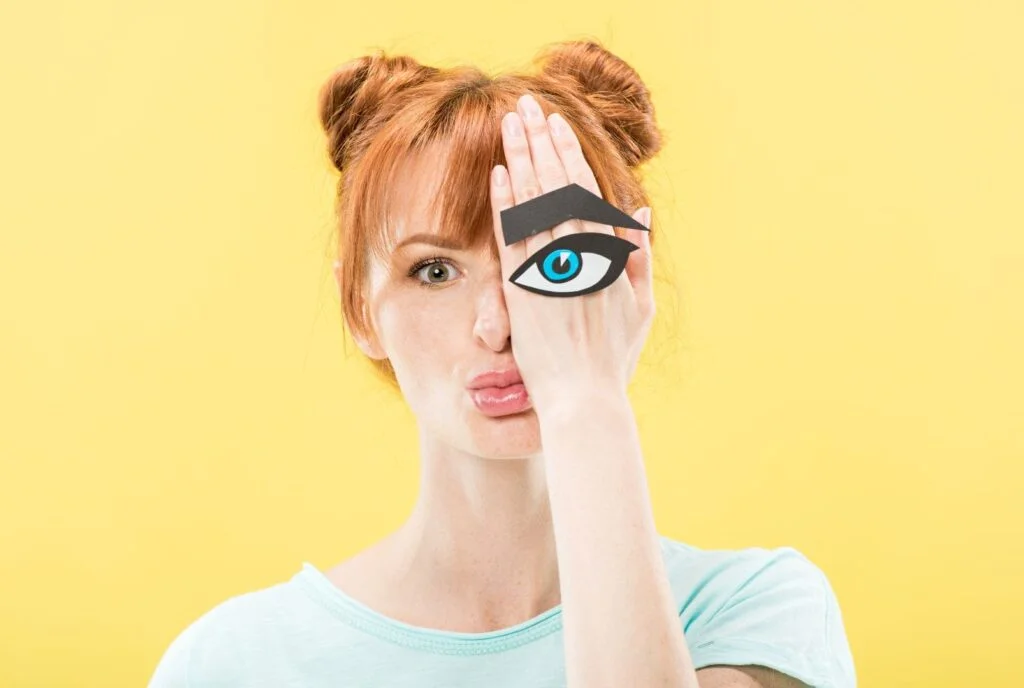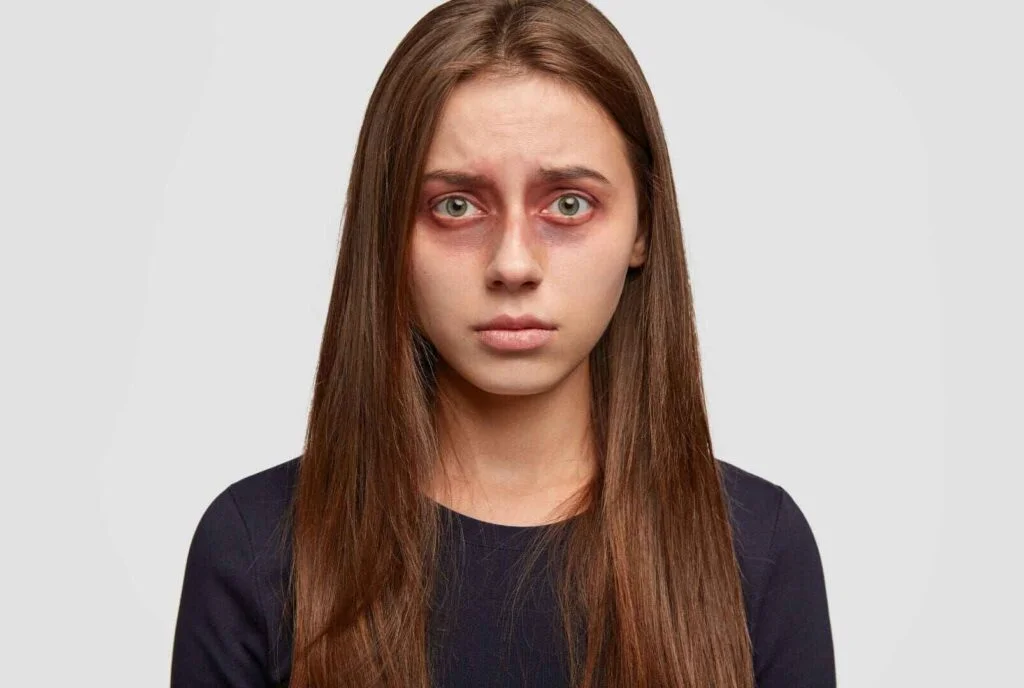What is the Side Eye Meme?

The “side eye meme” or “side eye glance meme” refers to a series of reaction images and GIFs depicting a skeptical, judgmental facial expression. The images typically show a person looking out of the corner of their eyes, often raising an eyebrow or scowling to express doubt, disapproval, or contempt towards something.
Origins and Meaning

This meme is thought to have emerged around 2014, spearheaded by reaction GIFs of various black women giving fierce, withering side eye glances. The facial expression and body language seem to say, “Oh no you didn’t,” or “I am judging you so hard right now.”
The sassy, attitude-filled stare struck a chord, communicating volumes without needing any words.
Visual Elements
The signature elements of the side eye glance meme include:
- A sharp look from the corners of the eyes
- Raised or arched eyebrows
- Pursed lips
- Tilted head
- A posture communicating attitude
When done well, the combined facial cues and body language elicit a dynamic, no-nonsense reaction perfect for mocking, throwing shade, or passing judgment.
Common Captions and Text
Popular captions and text overlaying side eye images include:
- “The side eye is real.”
- “I see you.”
- “Really, though?”
- “You got me messed up.”
- “Do better”
Adding textual commentary builds on the innate sassiness of the visuals.
Popularity and Spread
As memes do, the side eye viral images have spawned endless reaction GIF and image iterations, with new examples continuing to emerge. Social media platforms like Twitter have accelerated the meme’s spread and evolution through viral threads and accounts like @SideEyeingChloe featuring a toddler giving epic stank face realness.
The simplicity and attitude built into the side eye meme have given it versatility and endurance while allowing for creative riffing.
Real-World Usages
Beyond dominating as a top reaction GIF, side eye memory has influenced marketing campaigns, merchandise, and even politics.
- An Australian “I see you” road safety ad campaign adopted the meme’s judgmental glare to grab drivers’ attention.
- Retail brands like Walmart and TV shows leverage side-eye images within social posts and ads, playing on pop culture familiarity.
- The meme made waves in 2016 American politics as Senator Tim Kaine was widely mocked for giving opponent Mike Pence excessive side eye during the VP debate.
The meme’s powerful visual shorthand for skepticism and disapproval makes it almost universally relatable and applicable.
Side Eye in Media and Entertainment: Much like other viral memes, the side eye has been widely referenced and emulated in films, TV shows, music videos, and performances.
- In several music videos ranging from Fifth Harmony to Normani, the signature sideways glare and pursed lips mimic meme images.
- Comedians like Kevin Hart, Tiffany Haddish, and Awkwafina have expertly nailed the side eye expression in movies and shows.
- Beyonce’s iconic 2016 Super Bowl halftime appearance spawned reaction GIFs pairing her choreography with side eye images.
Evolution of the Meme Part of what has kept the side-eye meme train going is its continued evolution. What started primarily as reaction GIFs has expanded to include:
- Short-form TikTok videos showcasing new people, animals, and scenarios as side-eye-worthy
- YouTube compilations and montages celebrating savage moments of judgment
- An EXPLOSION of side-eye stickers and filters across social apps
- Meta memes use the side eye meme to…judge other memes.
This cultural Snowball effect reflects the meme’s entrenchment and flexibility.
Unique Attributes and Appeal Unlike many meme formats, the side eye meme is more an expression than a specific image. This gives it remarkable fluidity across contexts thanks to a few unique attributes:
- Simplicity – At its core, it is just a facial expression easily mimicked by anyone. This lends itself to mass personalization and relatability.
- Attitude – The palpable sass and skepticism baked into the glare give it an emotional resonance.
- Flexibility – Its vagueness around specific context allows the meme to function as commentary on almost anything questionable, mockable, or outrageous.
Combined, these attributes conjure an almost visceral reaction amplified by the visual medium.
Critical Reception and Analysis Critics have viewed the meme as speaking to shifting attitudes and culture.
Some media analysts point to its origins among minority women and broader resonance with Black culture as keys to the meme’s popularity online. It ties into the celebration and reclamation of non-white self-expression.
Others see the judging negativity embodied in the images as fueling unhealthy online callout culture. Its sassy hostility can feel smug when aggressively directed at individuals versus concepts.
In general, though, the side eye’s reception has been more about its humor and relatability than any serious backlash. It continues to thrive as a cultural touchstone.
Side Eye Meme Compared to Other Memes The side eye joins other reaction memes like the surprised Pikachu and woman yelling at cat memes in exploding as vehicles for commentary, emotion, and catharsis online.
Unlike format-specific memes, though, the side eye glare itself is more dynamic – easily substituted across images, videos, and scenarios without losing cultural meaning.
This gives it an advantage in longevity over memes with more rigid templates. The meme may shift to new faces and contexts, but the sassy, judging sentiment at its core persists.
The Future of the Side Eye Meme Much like its withering stare that implies “I’m not going anywhere,” the side eye meme remains a digital fixture years into its existence without losing steam.

If anything, its embedding in online culture only seems to expand over time. It likely will continue popularizing across genres and platforms as new creators riff on its signature skeptical sentiment in emerging viral content.
In a media world always in need of pithy, visual shorthand calling out questionable takes, outrageous characters, and eye-roll-inducing concepts, the side-eye meme supplies endless fodder. Its elemental simplicity will keep it glaring balefully out from screens for years to come.
Conclusion
The viral side eye meme supplies a bite-sized serving of sass and side-hurled skepticism that resonates universally. Years since its emergence, the meme persists as a cultural touchstone that permeates entertainment, marketing, and digital expression.
Its simplicity and resonance seem destined to keep it angrily squinting at us from screens for years to come as questionable content continually arises, needing that signature scowl of disapproval. Love it or be judged by it, the side eye meme remains peak reaction content, crystallizing an entire snippy mindset into a single glance.






